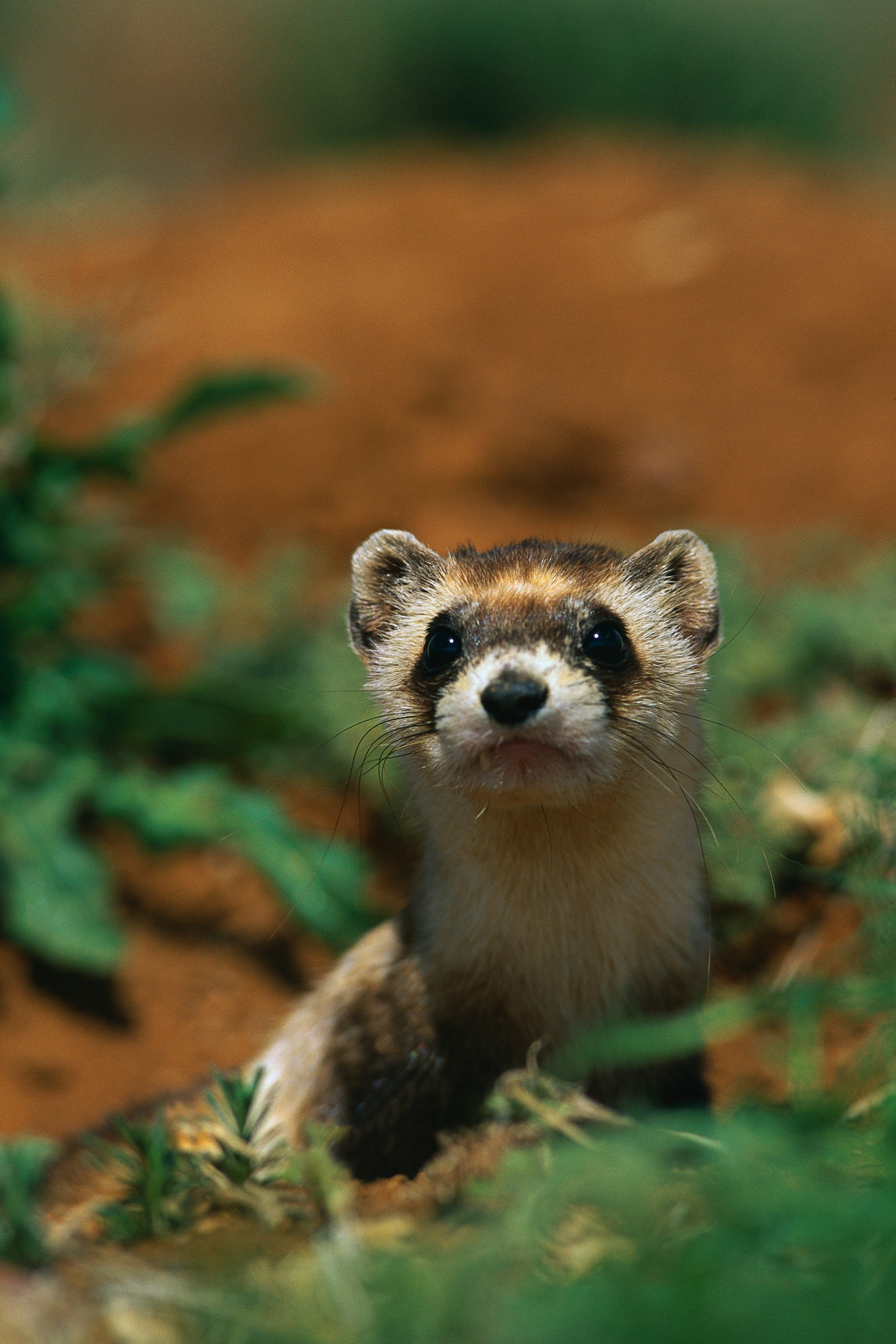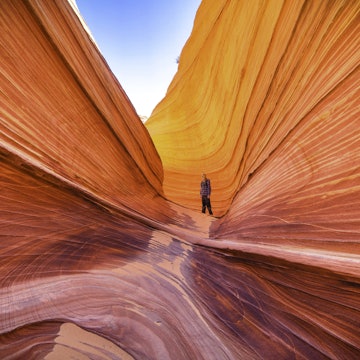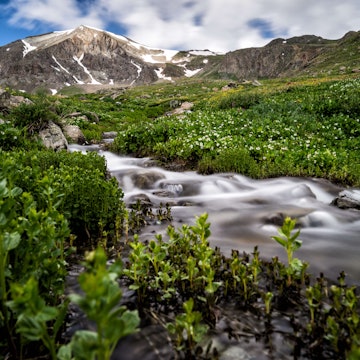

A condor flies in front of the moon at Pinnacles National Park, California. NickLustPhotography / Getty Images
In a country where everything seems to be supersized, it’s no surprise this also applies to rewilding – the global movement to restore plundered ecosystems to their former glory. Plans to transform millions of acres of cattle ranches in Montana into the continent’s largest nature reserve prove Americans also dream big when it comes to conservation. And in Yellowstone National Park, the USA has a rewilding success story befitting of Hollywood. The star in this happy-ever-after tale is the gray wolf, which has become a poster child for the global rewilding movement since recolonizing the park. Here are nine places to watch nature reclaim the USA.

1. Yellowstone, Wyoming/Montana/Idaho
The reintroduction of the gray wolf to Yellowstone (which spreads into three states: Wyoming, Montana and Idaho) by the US Fish & Wildlife Service had a profound impact on the park’s ecology. Deer and elk, which once grazed the plains with impunity, suddenly found themselves on the menu. Their falling numbers gave shrubs and trees a chance to grow. This attracted insects, birds and beavers, which damned rivers and created habitats for other species. An ecosystem was reborn – and all thanks to the gray wolf. Travelers can witness the glorious results of this conservation initiative on a visit to Yellowstone, which is perennially one of America’s most popular national parks.
2. American Prairie Reserve, Montana
Before European settlers arrived, the prairies of Montana teemed with life. Bison, pronghorn, elk and deer roamed the plains in their thousands, pursued by wolves, grizzlies and cougars. This biodiversity was diminished when settlers cleared the land to make way for cattle ranches; a process that is now being reversed by the American Prairie Reserve, which is rewilding old cattle ranches to create the largest nature reserve in North America. Scattered throughout the reserve are campsites and safari-style lodges where guests can chart the progress of the initiative, admire the local wildlife and bed down in yurts.
3. Heartland Ranch Nature Preserve, Colorado
The story that played out in Montana was replayed in Colorado’s Southern Plains, where many wildlife-rich habitats were cleared to make way for cattle. Trying to restore the region to its former glory is the Southern Plains Land Trust, which is buying up farmland and returning it to nature. Its flagship park is Heartland Ranch Nature Preserve, where reintroduced bison roam alongside pronghorn, mule deer and black-tailed prairie dogs. Off-road travel is not permitted, but the park is bisected by public roads that anyone can travel on.
4. Pinnacles National Park, California
The Californian condor became extinct in the wild in 1987, prompting one of the costliest ever reintroduction programs. The mission, run by the US Fish & Wildlife Service, was a success and today dozens of the birds can be spotted soaring above the Golden State, most notably in Pinnacles National Park. Visitors who aren’t lucky enough to see the raptors there can take solace from the scenery in the park, which is home to soaring mountains, shimmering lakes and some of the best hiking trails in California.
5. Innoko National Wildlife Reserve, Alaska
Tens of thousands of wood bison once roamed the boreal forests of Alaska, until overhunting and habitat loss pushed them to extinction there. In 2003, however, the mammals made a welcome return to Innoko National Wildlife Reserve following a successful reintroduction program run by Alaska Department of Fish and Game. It is an intrepid traveler who endeavors to visit them: there are no roads into the park, meaning visitors must arrive either by boat or plane. Lynx, grizzly bears and wolves make the schlep there all the more rewarding.
6. Florida Keys, Florida
The demise of the world’s coral reefs is a stark reminder about what we stand to lose due to climate change. Offering some hope for these beleaguered ecosystems is Florida’s Coral Restoration Foundation, which supports the natural recovery of reefs through large-scale coral cultivation and outplanting (transplanting corals grown in offshore nurseries to the sea). Scuba divers can contribute to the initiative by taking part in citizen science projects to help monitor the progress of transplanted reefs in the Florida Keys.

7. Badlands National Park, South Dakota
Most people come to Badlands National Park for epic scenery and otherworldly rock formations, but those who look a little closer may see something more miraculous: the black-footed ferret. Once believed to be extinct in the wild, the creatures have experienced a remarkable reversal in fortunes thanks to a successful captive breeding program run by the Fish & Wildlife Service. They have since been reintroduced to sites across the US, including the rugged Badlands, which is a favorite spot for hikers.
8. Olympic National Park, Washington
Olympic National Park is home to an astonishing diversity of landscapes, including glacier-capped mountains, temperate rainforests and rugged seashores. It’s also the scene of one of America’s most successful rewilding initiatives run by various conservation groups: the reintroduction of Pacific fishers. Contrary to popular belief these weasel-like critters feast not on fish but other land mammals. Once persecuted to the brink of extinction for their fur, the creatures are now a star attraction in the park, where killer whales, bobcats, coyotes and American black bears can also be spotted.
9. New York, New York State
The Big Apple might seem like an improbable location for a rewilding initiative, but with a little help from The Peregrine Fund the city is now home to a species that almost went extinct in the US: the peregrine falcon. The birds of prey are using nesting boxes fitted to bridges across the Hudson to lay roots in New York City, where they wow onlookers with their aerial acrobatics (they can fly at nearly 200mph). The raptors also help control the local pigeon population. Can’t make it to the city to see them? Well, there’s a webcam for that.
You might also like:
Back to nature: 8 rewilding projects you can visit in Europe
How to have a sustainable visit to the Great Barrier Reef
Sustainable travel: 6 ways to make a positive impact on your next trip















